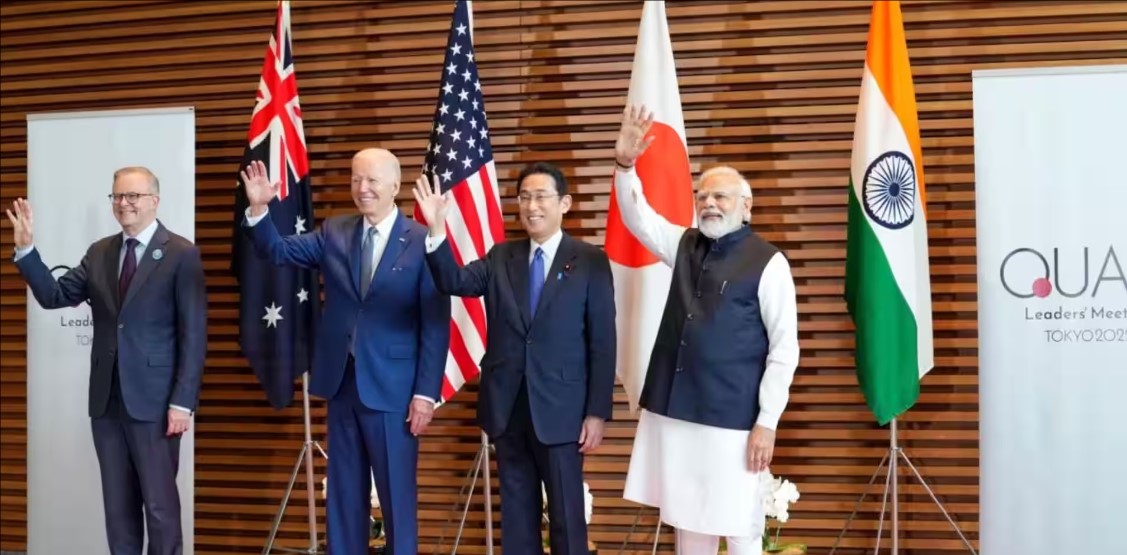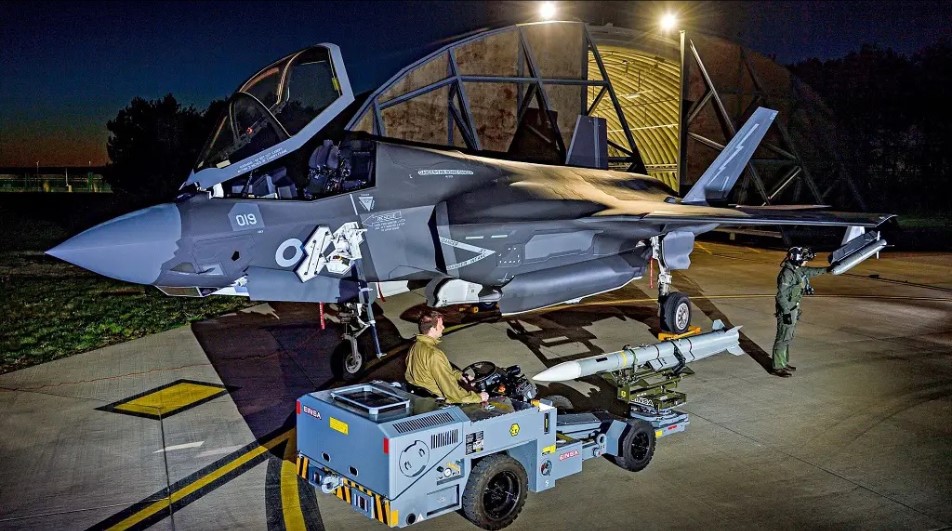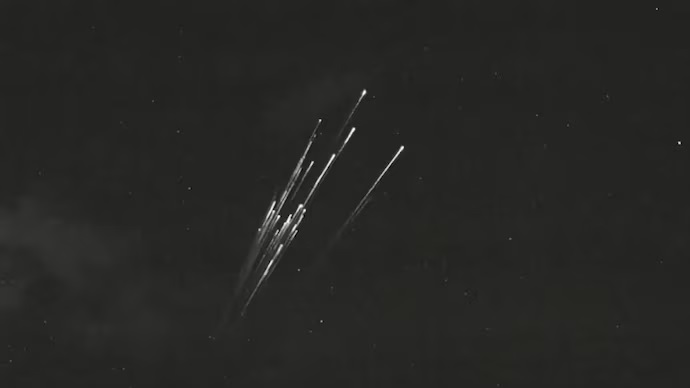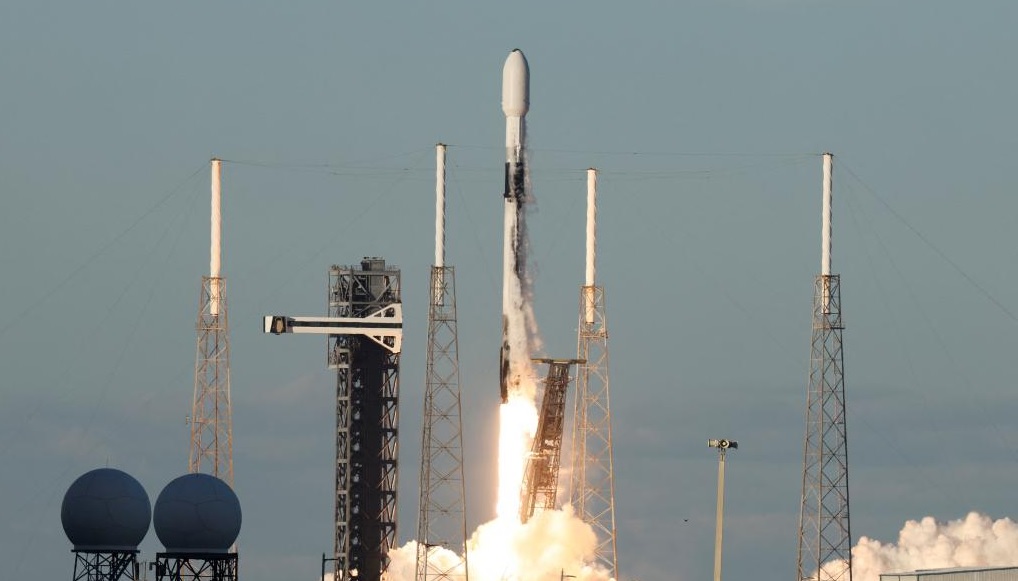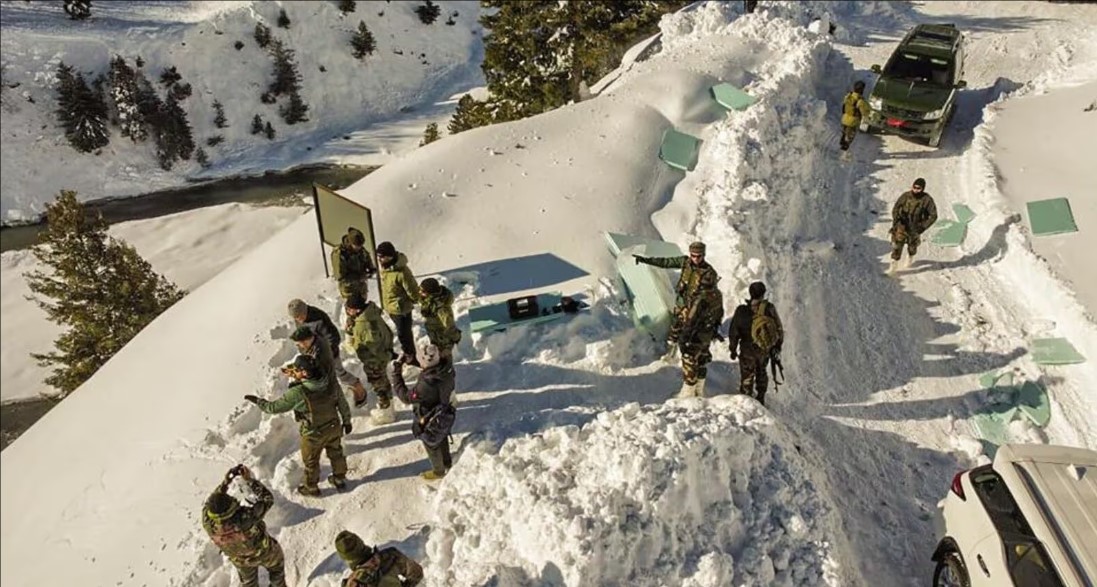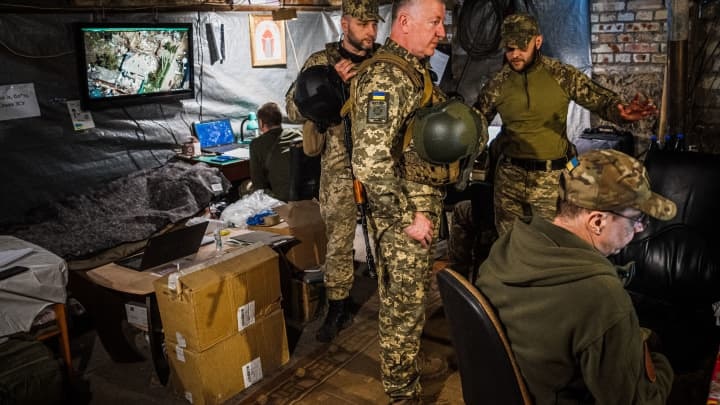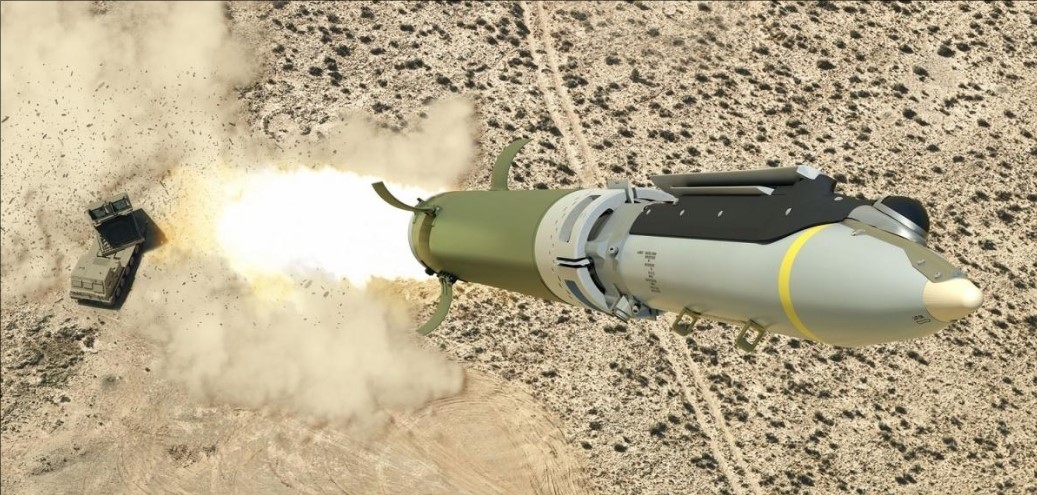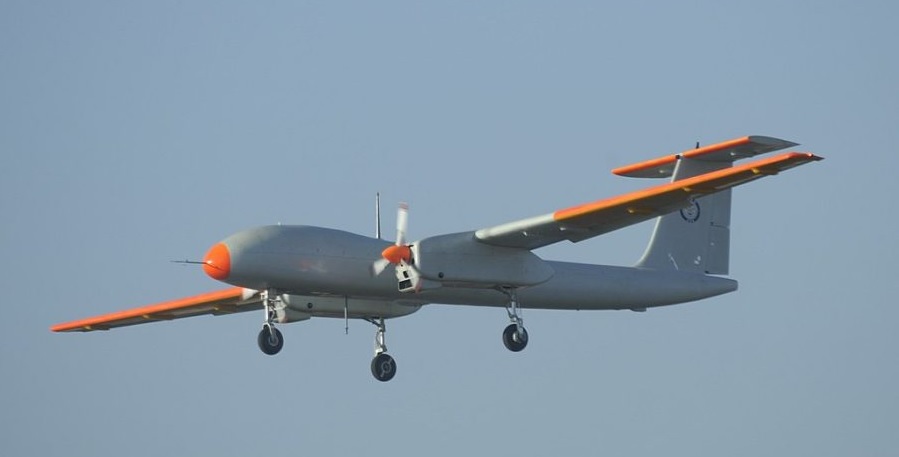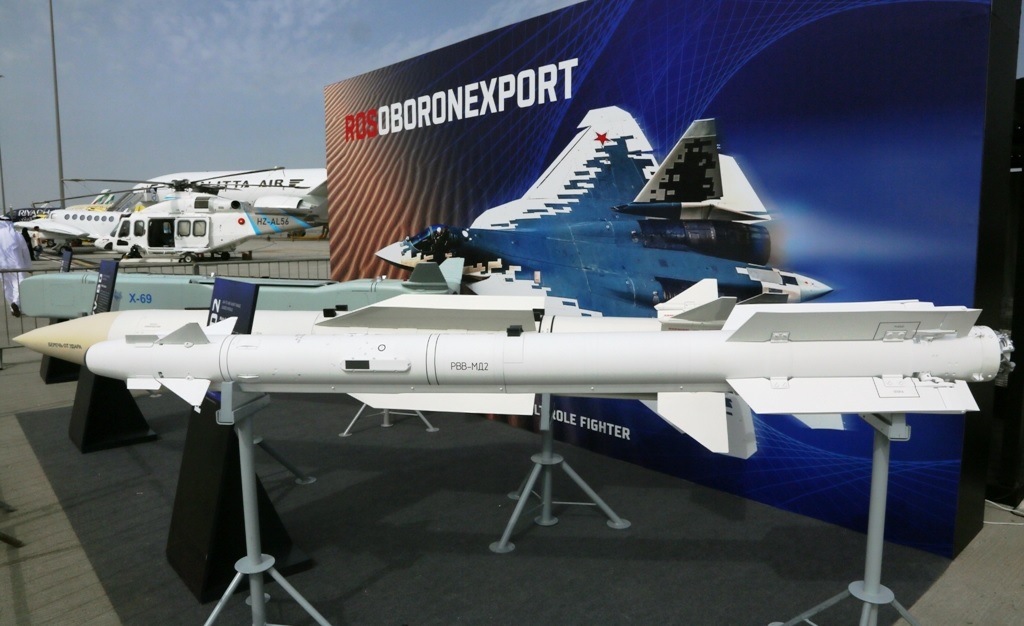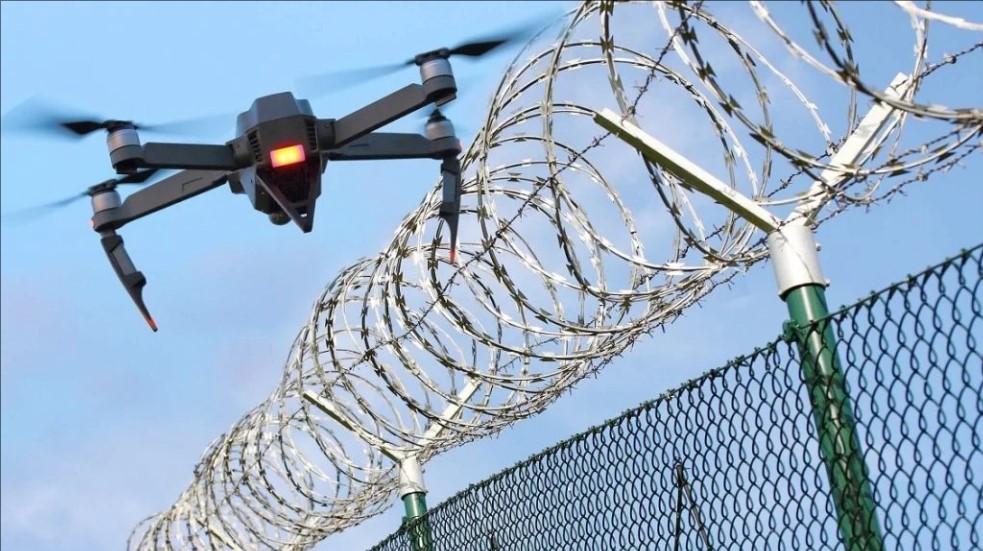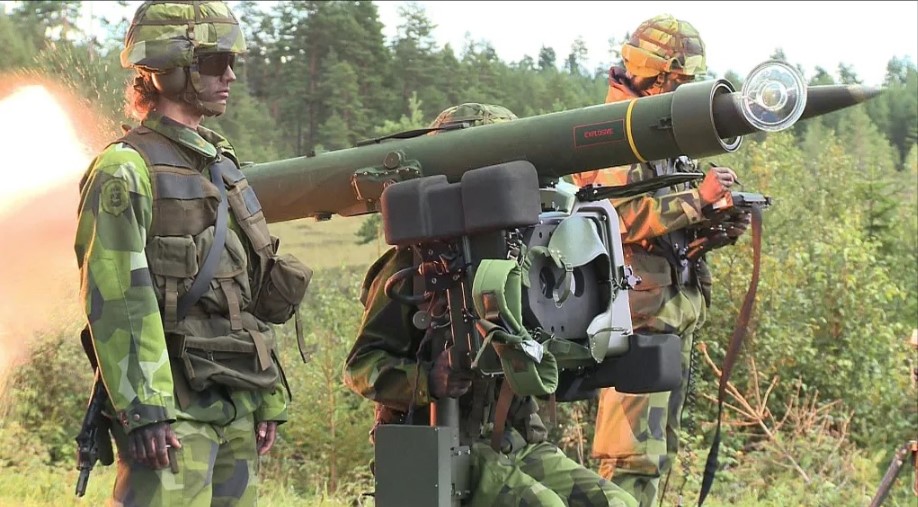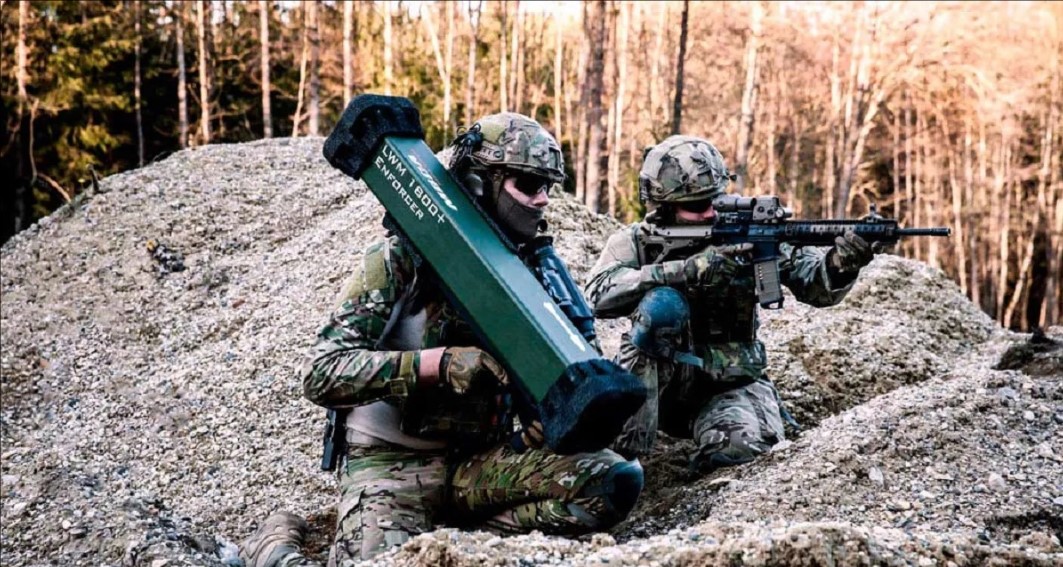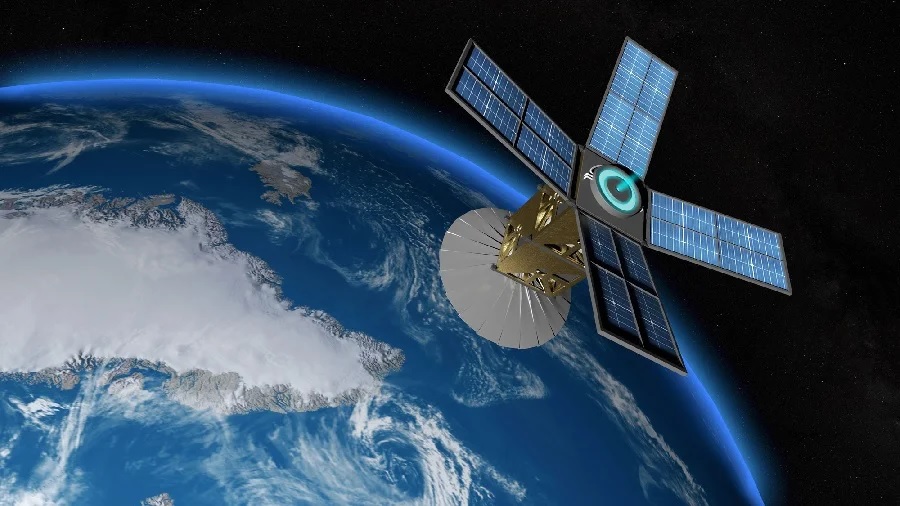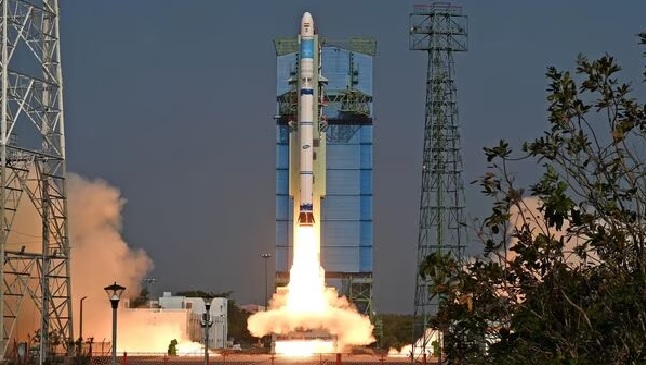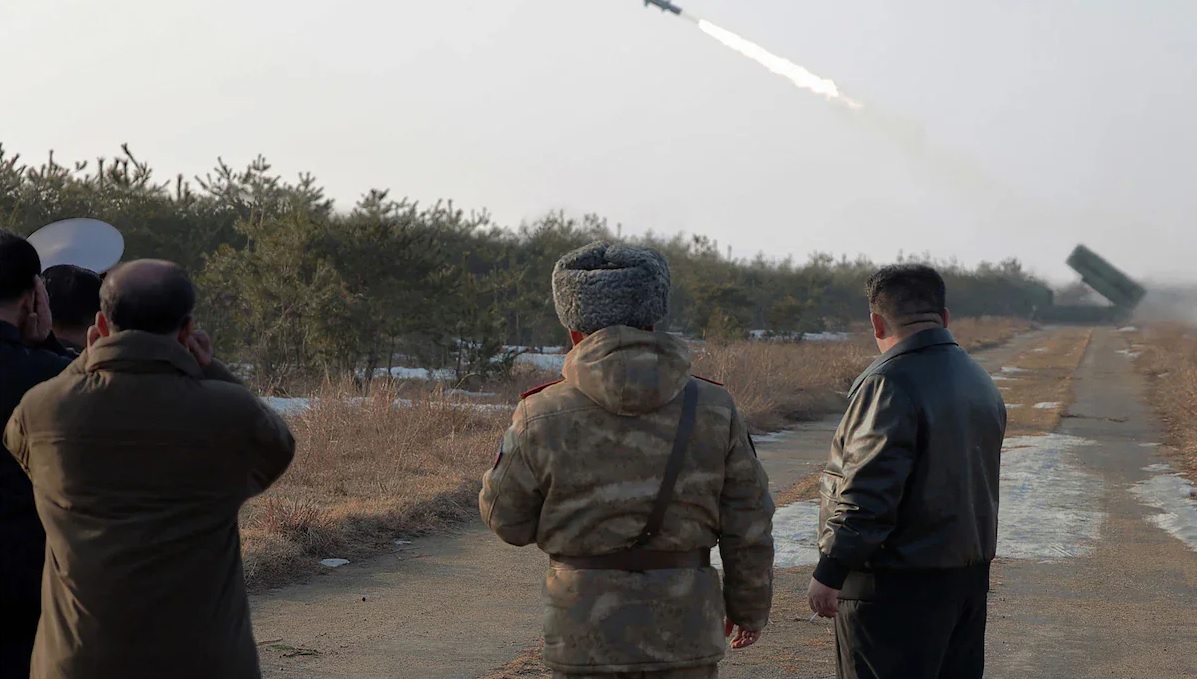India
Defense News ,India :- In a significant move to make India stronger at sea, the Indian Ministry of Defence has given the green light to buy 15 new aircraft for maritime patrols. This deal, estimated to cost Rs 29,000 crore, includes nine surveillance planes for the Indian Navy and six patrol planes for the Indian Coast Guard.The special thing about these planes is that they will be made using the C-295 transport aircraft, built in India through a partnership between Tata Advanced Systems and Airbus. This is a big step towards the "Make in India" plan for the defense sector. The Defence Research and Development Organisation’s Centre for Airborne Systems will add special radars and sensors to the C-295 platforms, turning them into versatile maritime patrol aircraft.Getting these new aircraft will really help India keep a close eye on its long coastline and exclusive economic zone (EEZ). The Navy's new surveillance planes will improve its abilities in things like anti-submarine warfare, search and rescue, and long-range surveillance. Similarly, the Coast Guard's upgraded patrol planes will be more effective in tasks such as protecting fisheries, anti-piracy efforts, and responding to disasters.This move is happening at a time when there are increasing worries about security in the Indian Ocean, including issues like piracy, illegal fishing, and potential tensions between countries. By strengthening its maritime abilities, India can actively work towards regional stability and protect its interests at sea.Approving this project is a big step in bringing India's maritime forces up to date. Using planes made in India promotes self-reliance and technological progress in the defense sector. When these aircraft are delivered, both the Navy and the Coast Guard will be better equipped to protect India's interests at sea and contribute to security in the region.
Read More → Posted on 2024-02-16 15:36:18India
Defense News ,India US Japan Austraila :- The US House of Representatives has overwhelmingly passed the Quad bill, pushing the Biden administration to create a Quad Intra-Parliamentary Working Group for closer cooperation among the US, Australia, India, and Japan. The Quad is a partnership between these four nations, committed to maintaining a free and inclusive Indo-Pacific, particularly in response to China's assertive actions in the South China Sea.With a vote of 379 to 39, the 'Strengthen US-Australia-India-Japan Cooperation' bill emphasizes the need to enhance collaboration between these countries. The bill instructs the State Department to present a strategy to Congress within 180 days for increased engagement with the Quad. Additionally, negotiations are to begin within 60 days to establish a Quad Intra-Parliamentary Working Group with Japan, Australia, and India.The bill also proposes a US group with a maximum of 24 members of Congress to represent the country in the working group. It outlines guidelines for annual meetings and group leadership, requiring the group to submit an annual report to the congressional foreign affairs committees.The legislation, introduced by Congressman Gregory Meeks, mandates the State Department to report a strategy for boosting engagement and cooperation with the Quad to Congress. The strategy aims to address key issues, including preparing for future pandemics, co-developing innovative technologies, and deepening economic engagement.Meeks, Ranking Member of the House Foreign Affairs Committee, highlights the importance of the Quadrilateral Security Dialogue in promoting a free and open Indo-Pacific, aligning with US interests in the region. China's claims in the South China Sea, disputed by neighboring countries, have prompted this alliance.Congresswoman Ilhan Omar from Minneapolis, one of two Democratic lawmakers who voted against the bill, reflects the diverse opinions on this legislation.Meeks expressed pride in advancing the "Strengthening the Quad Act," emphasizing the Quad's role in promoting democracy, open societies, and international rules. The legislation strives to ensure the Quad's longevity and success by fostering greater cooperation and engagement among the four legislatures. Meeks concludes by emphasizing the need for democracies to collaborate in the face of rising authoritarianism globally.
Read More → Posted on 2024-02-16 14:38:27World
Defense News ,Italy :- The United States Department of State recently gave the green light for Italy to buy more advanced weapons for its Lockheed Martin F-35A/B Lightning II multirole fighters. These weapons are worth about USD 220 million.Italy plans to get more RTX GBU-53/B StormBreaker SDB-II guided bombs. They want to add 125 bombs and eight simulators to their arsenal. Before, Italy got approval for buying 48 of these bombs and four simulators.The new batch of bombs is valued at a maximum of USD 150 million, and the first batch was contracted in December last year.The GBU-53/B StormBreaker bombs are special because of their guidance system, allowing them to destroy both stationary and moving targets. They are lightweight (93 kg), making it possible for multirole combat aircraft to carry more of them, helping to eliminate more targets with less collateral damage.In addition to the bombs, Italy also wants to buy twelve AIM-120C-8 AMRAAM guided missiles. This is an extension of a previous request, which included twelve missiles and the necessary logistical package. The total cost for the 24 missiles, additional elements, and support is valued at a maximum of USD 70 million.Both the StormBreaker bombs and AMRAAM missiles will play a crucial role in enhancing Italy's F-35 Lightning II fleet, improving its abilities in both air-to-air and air-to-ground combat.
Read More → Posted on 2024-02-16 14:33:22Space & Technology
Space News ,India :- ISRO launched Cartosat-2, their first advanced imaging satellite, on January 10, 2007. This satellite, weighing 680 kg, orbited at 635 km above Earth and provided detailed pictures for urban planning until 2019.Originally, Cartosat-2 was expected to orbit for about 30 years. However, to follow international guidelines on space debris, ISRO decided to use leftover fuel to lower its orbit. This action reduced the risk of collisions and ensured a safe end-of-life disposal, following recommendations from organizations like the United Nations Committee on the Peaceful Uses of Outer Space (UN-COPOUS) and the Inter-Agency Space Debris Coordination Committee (IADC).ISRO's System for Safe and Sustainable Space Operations (IS4OM) team predicted Cartosat-2's atmospheric re-entry for February 14, 2024. On this day, electrical passivation was successfully completed, and tracking confirmed that the satellite reached an altitude of about 130 km.The Multi-object tracking radar at Shriharikota was used to track Cartosat-2 during its atmospheric re-entry over the Indian Ocean at 10:18 UTC / 3:48 pm IST on February 14, 2024. Analysis indicated that all major spacecraft components would disintegrate during this process.Cartosat-2's successful de-orbiting marks a significant achievement for ISRO in ensuring the long-term sustainability of activities in outer space.
Read More → Posted on 2024-02-16 14:28:07World
Defense News ,U.S :- On Wednesday, SpaceX successfully sent six new satellites into low-Earth orbit, dedicated to detecting and tracking missiles for the United States.These satellites consist of two Hypersonic and Ballistic Tracking Space Sensor (HBTSS) units from the Missile Defense Agency (MDA) and the final four satellites from the Space Development Agency's (SDA) Tranche 0 Tracking Layer. The entire Tranche 0 satellite group includes 27 units, with 19 focused on data transport and communications, while the rest are dedicated to missile warning.SDA director Derek Tournear highlighted the collaboration, stating that launching both Tracking and HBTSS satellites into the same orbit is a significant achievement for both agencies. This joint effort allows them to observe test targets simultaneously, ensuring a better understanding of how the sensors work together.Looking ahead, in Tranche 1, the SDA plans to deploy both sensor types as an operational system. This includes medium-field-of-view demonstrating fire control based on HBTSS design and wide-field-of-view for warning and tracking based on Tranche 0 tracking design.The HBTSS, a key component in this launch, specializes in detecting and tracking ballistic and maneuvering hypersonic missiles, surpassing current systems' capabilities. It boasts higher sensitivity to the lower heat signatures of hypersonic missiles. The HBTSS is designed to identify these advanced threats earlier than terrestrial radars and provide crucial tracking data for interceptors.Following the recent launch, two HBTSS prototypes will undergo two years of in-orbit testing. The Missile Defense Agency (MDA) explained that the Space Development Agency (SDA) plans to build upon the successes of the HBTSS fire-control capabilities and incorporate them into future satellite tranches.In summary, this recent SpaceX launch marks a significant advancement in missile-detection technology, bringing together the expertise of both the MDA and SDA to enhance the capabilities of the United States' missile defense system.
Read More → Posted on 2024-02-16 14:24:21India
Defense News ,India :- The Defence Research and Development Organisation (DRDO) is creating a smart system to keep people safe from avalanches in the mountains. They're putting special sensors in a place called Zoji La, which is a very high mountain pass in Kashmir. This pass is on the road from Srinagar to Leh.Now, let's break down what this system does in simpler terms. The DRDO is using something called infrasonic sensors. These sensors can hear sounds or feel vibrations that are too low for humans to notice. They're like super-sensitive ears that can pick up signals from avalanches. The plan is to set up a bunch of these sensors in key locations along the Sonamarg–Zojila–Tangdhar route. This area is known for having avalanches, which are dangerous snow slides. By having these sensors in place, the system will be able to detect if an avalanche is happening and keep an eye on the situation.But it's not just about having sensors. There will also be devices to process and send the information collected by these sensors. Think of it like this – the sensors hear something, then they tell the system what's happening, and the system lets people know. The Defence Geo-informatics Research Establishment (DGRE) in Chandigarh is the group in charge of making sure everything works smoothly.DGRE is like the brain of the operation. It will get all the information from the sensors and figure out if there's any danger. Once they know what's going on, they'll share that information with the people who need to know, like the government agencies and the folks responsible for keeping everyone safe in those areas.This whole project is really important because Zoji La is a tricky place. It's super high up – around 11,575 feet high – and it's in the Kargil district, known for its tough terrain. The pass is closed during the winter because there's so much snow, and it's not safe for people to travel. But here's the thing – this pass is really important for getting to Ladakh from Jammu. Ladakh is a beautiful place, but it's a bit tricky to reach because of the tough terrain. So, the government is building a long tunnel under the pass. This tunnel will be about 14 kilometers long! That's like driving from one end of a big city to another. Once it's done, it will be the longest tunnel in Asia that goes in two directions.The best part is that this tunnel will make the journey much faster. Right now, it takes more than three hours to cross the pass, but with the tunnel, it will only take about 20 minutes. That's a huge improvement, and it will make it possible for people to travel to Ladakh even in the winter when there's a lot of snow.In summary, the DRDO is using smart technology to keep an eye on avalanches in Zoji La. They're putting special sensors in place to detect any danger, and a team in Chandigarh will process this information to keep everyone safe. This is especially important because Zoji La is a crucial pass, and the upcoming tunnel will make it easier for people to travel to Ladakh.
Read More → Posted on 2024-02-16 07:44:22World
Defense News ,Ukraine Russia War :- In the eastern town of Avdiivka, Ukraine has urgently sent more soldiers to reinforce its troops, stating that the situation is extremely critical. Russian forces have been besieging the city in the Donetsk region for the past year, surrounding it on three sides.The Third Separate Assault Brigade, in a post on its Telegram channel, confirmed its redeployment to strengthen Ukrainian troops in the Avdiivka area, emphasizing the critical nature of the situation. Recent weeks have seen Russian forces making progress in their attempts to capture the city, leading to reports of street fighting on the outskirts.Ukraine's top commander acknowledged on Wednesday that the country is outnumbered on the battlefield. The ongoing battle for Avdiivka, an industrial hub less than 10 kilometers north of Donetsk, has become one of the bloodiest conflicts in the two-year war. It is drawing comparisons with the intense fight for Bakhmut last year, where tens of thousands of soldiers lost their lives.The Third Separate Assault Brigade expressed concern about the unstable and threatening situation in Avdiivka. The enemy continues to actively rotate troops and deploy additional forces and resources into the city. Despite these challenges, Ukraine's army, as per the general staff, remains steadfast in holding back the enemy's attempts to surround Avdiivka.According to the general staff, Russia launched 34 attacks in the area on Wednesday, highlighting the intensity of the conflict. Additionally, Moscow continued its aerial attacks on Ukraine overnight, firing 26 missiles. These attacks resulted in the death of at least one person and the destruction of multiple homes, according to Ukrainian officials on Thursday.In a tragic incident, a 66-year-old woman lost her life when two projectiles hit a residential area in the northeastern city of Chuguyiv, as reported by the prosecutor's office. Despite the challenges, Ukraine's air defenses successfully shot down 13 of the Russian missiles, according to the air force.
Read More → Posted on 2024-02-16 07:39:05World
Defense News ,Ukraine Russia War :- The Ukrainian military recently used the Ground Launched Small Diameter Bomb (GLSDB), marking a significant development in their arsenal. The evidence emerged online when remnants of this ammunition were discovered near Kreminna in the Luhansk region on February 13.The United States government had announced the future delivery of GLSDB missiles as part of an arms package on February 3, 2023. It took almost a year for this promise to be fulfilled due to certain reasons, mainly because this type of ammunition was not in serial production at that time. The introduction of GLSDB brings a notable change to the capabilities of the MARS and HIMARS rocket systems.Previously, Ukraine relied on GMLRS missiles with a range of up to 85 km. However, after the initial shock of their use, Russians strategically moved their large warehouses beyond this range, over 100 km from the front lines. The GLSDB, with its doubled flight range, is poised to alter this dynamic, even though it comes at the cost of reducing the explosive material content in the warhead. Despite the reduced explosive power, hitting ammunition depots with the GLSDB is expected to yield satisfying results.The GLSDB could emerge as a compelling alternative to the scarce ATACMS Block I missiles, which Ukrainians have used sparingly in combat since October 2023. Despite a similar range, the lightweight GLSDB missile is estimated to cost around USD 40,000, significantly cheaper than the heavy ATACMS, which comes with a price tag of about USD 1 million.Notably, the ATACMS version provided to Ukrainian soldiers is equipped with a cluster warhead, making it suitable for targeting scattered objects across open ground. This limitation was evident during attacks on airfields in Berdyansk and Luhansk, where several helicopters were taken down in open spaces. In contrast, the GLSDB has the ability to penetrate building roofs and can penetrate about 90 cm of reinforced concrete before detonation.The ground-launched GLSDB is a collaborative effort between Boeing in the United States and Saab in Sweden. It combines the GBU-39/B Small Diameter Bomb with the engine from the M26 rocket of the 227 mm caliber from the HIMARS multiple rocket launcher system. Launched from the ground to high altitudes, the GLSDB deploys wings and fins after the engine burns out, entering its glide phase towards the target. The estimated flight range is around 150-160 km, and its targeting is achieved through inertial navigation with satellite correction, ensuring accuracy to less than 1 meter.
Read More → Posted on 2024-02-16 07:35:32India
Defense News ,India :- Union Minister Rajeev Chandrasekhar recently declared the establishment of Assam's inaugural semiconductor packaging facility valued at nearly ₹25,000 crore. This announcement was made at the Digital India futureSKILLS Summit, hosted at Gauhati University's Birinchi Kumar Baruah Auditorium.Chandrasekhar attributed the success of this venture to Chief Minister Himanta Biswa Sarma's leadership and the collaboration between the Assam Government and the TATA Group. He highlighted the elimination of the need for aspiring young Indians in the semiconductor industry to relocate, thanks to this initiative.The Minister underscored India's economic transformation from the 'fragile 5' to the 'top 5' global economies, crediting PM Narendra Modi's leadership. He emphasized the abundance of opportunities in emerging technology sectors and urged youth to equip themselves with skills in AI, cybersecurity, and semiconductors.Notable companies like NVIDIA, Intel, AMD, HCL, Wipro, and IBM conveyed a unified message at the summit — abundant job opportunities exist, but acquiring the necessary skills is crucial. Chandrasekhar outlined the government's three-pronged strategy, including futureDESIGN for design innovation, futureLABS for system innovation, and futureSKILLS to prepare the youth for emerging sectors.FutureSKILLS aims to position India as a global leader in technology, creating a competitive talent pool accessible globally. The summit, organized by the Ministry of Electronics and Information Technology (MeitY) through the National Institute of Electronics and IT (NIELIT), brought together dignitaries, industry leaders, policymakers, and technology enthusiasts to discuss strategies for nurturing future-ready talent.Assam Education Minister Dr. Ranoj Pegu highlighted the state government's efforts in digital skilling, citing projects worth Rs. 1800 crore implemented across 77 polytechnics and ITIs. An agreement with TATA to establish a semiconductor industry near Guwahati was also disclosed.Key speakers included Kuntal Sensarma, Economic Adviser at MeitY, Jaya Jagadish of AMD India, Ruchir Dixit from Siemens EDA, Lingraju Sawkar, President of Kyndryl India, Ganesh Gopalan, CEO of Gnani.AI, and Prof. Subhasis Chaudhuri, Director of IIT Bombay.Ganesh Gopalan expressed that India is an ideal location to start an AI company, citing a global projection of around 100 million AI jobs in the next five years. Ruchir Dixit highlighted an expected shortage of 4 lakh skilled workers in the electronics industry in the next five years, presenting a significant opportunity.Kuntal Sensarma, Joint Secretary & Economic Adviser at MeitY, emphasized skills as the passport to prosperity and MeitY's focus on skilling in emerging technologies. The summit aims to formulate a roadmap to transform India into a global talent hub.Jaya Jagadish, Head of AMD India, stressed the semiconductor industry's vital role in modern technology. Lingraju Sawkar, President of Kyndryl, invoked APJ Abdul Kalam's quote, emphasizing the summit as an opportunity to transition from job generator to job provider.Prof. Subhasis Chaudhuri, Director of IIT Bombay, highlighted government skilling programs and NIELIT leveraging the New Education Policy 2020. Dr. Y. Jayanta Singh, Executive Director of NIELIT Guwahati, delivered a vote of thanks.The summit featured exhibitions and interactive sessions with startups and academia representatives. Over 30 innovative future skills technologies were showcased. Strategic collaborations between NIELIT and industry players like Intel, HCL, Microsoft, Kyndryl, IIM Raipur, IIITM Gwalior, and Wipro were formed to bridge the gap between academia and industry standards.Four panel discussions centered on Semicon India, IndiaAI, Cyber Security & Emerging Technologies, and Digital India's Talent for the Global Workforce. The summit concluded with Chandrasekhar expressing gratitude to all contributors, highlighting the significance of empowering Assam's youth with digital skills.
Read More → Posted on 2024-02-16 07:29:46India
Defense News ,India :- The Indian Navy is now in control of the TAPAS MALE (Medium Altitude Long Endurance) UAV program to evaluate its performance rigorously. This comes after the Indian Army and Air Force distanced themselves due to technical issues, particularly the UAV's inability to reach a 30,000-foot altitude and sustain operations for 24 hours.New Beginning for TAPAS: Naval Testing in ProgressUndeterred by setbacks, the Navy plans to test the TAPAS extensively in maritime environments, focusing on the Andaman and Nicobar Islands. If the UAV meets the Navy's expectations, it could become the Navy's first customer, considering the procurement of a squadron comprising 12 units. This would significantly boost the struggling TAPAS program.Overcoming Challenges: Altitude and Endurance FocusHowever, the Navy's evaluation comes with challenges. The Defense Research and Development Organization (DRDO), the program's developer, must address altitude and endurance limitations. This involves testing a new high-rated engine to enhance altitude performance and implementing measures for drag reduction, enabling extended cruise times above the 30,000 feet threshold.Strategic Assessment: Navy's Cautious Approach to UAV ProcurementThe Indian Navy's decision to evaluate the TAPAS highlights its cautious approach to UAV acquisitions. Recently, the Navy received Israeli Hermes-900 MALE UAVs, named Drishti-10 Starliner, produced by Adani Elbit Advanced Systems India Limited. These UAVs are undergoing performance assessments before any further procurement considerations are made.
Read More → Posted on 2024-02-16 07:22:13World
Defense News ,Russia :- Russia's Rostec state corporation, through JSC Rosoboronexport, recently introduced its latest short-range air-to-air missile, the RVV-MD2, at the Dubai Air Show 2023. This marks the missile's first international debut. Designed initially for the Su-57 fifth-generation fighter program, the RVV-MD2 is also compatible with Sukhoi 30/35/34 aircraft, extending its potential use to various operators.The RVV-MD2 stands out with its advanced combined guidance system, seamlessly integrating inertial guidance, a multi-element dual-channel infrared seeker with enhanced jamming resistance, and a radio correction receiving channel. This advanced technology enables the missile to independently determine its position and track enemy aircraft even during evasive maneuvers, covering an impressive 180° forward hemisphere scanning area.Rosoboronexport's goal is to attract different Russian jet operators with the RVV-MD2, given its compatibility with multiple Sukhoi platforms and its advanced capabilities. This could position the missile competitively in the air-to-air missile market.Key Features:1. Developed for Su-57 Fighter Program: Specifically designed for the advanced Su-57, adaptable to various Sukhoi platforms.2. Combined Guidance System: Integrates inertial navigation, advanced infrared seeker, and radio correction for precise targeting.3. Independent Targeting: Capable of determining its own coordinates and autonomously tracking targets.4. 180° Forward Hemisphere Scanning: Effectively tracks evasive maneuvers.
Read More → Posted on 2024-02-16 07:17:24World
Defense News ,UK ,Ukraine :- On Thursday, Britain revealed its plans to collaborate with Latvia in leading an international coalition focused on delivering thousands of unmanned aerial vehicles (UAVs) to Ukraine.Last month, London committed £200 million ($250 million) to offer the "largest drone package ever given to Ukraine by any nation." This commitment was part of a 10-year security cooperation agreement with Kyiv.The UK's contribution involves supplying thousands of "first-person view" drones, enabling operators to have a clear understanding of the situation and target positions, armored vehicles, and ships. These drones have proven to be highly effective since Russia's invasion of Ukraine two years ago.Defence Secretary Grant Shapps stated, "The UK is committed to providing Ukraine with what it needs," ahead of a NATO meeting in Brussels on Thursday. Referring to the collaboration with Latvia, he added, "Together, we will equip Ukraine with the capabilities necessary to defend itself and triumph in this conflict."During the NATO ministerial meeting, Britain, along with its 13 allies and potential member Sweden, is set to sign an agreement for two new procurement initiatives focused on munitions and missiles. Led by the UK, these initiatives aim to enhance defense industrial capacity across the Euro-Atlantic region and replenish depleted stockpiles due to the conflict in Ukraine.France, Germany, and Turkey are among the countries participating in these procurement plans, according to a statement from the defense ministry. Additionally, Britain is collaborating with NATO members Canada, Denmark, the Netherlands, and the United States to provide air-defense equipment to Ukraine, further strengthening the collective support for Ukraine's defense.
Read More → Posted on 2024-02-16 07:12:33India
Defense News ,India :- Indian army forces stationed along the Line of Control (LoC) took action on Friday to counter Pakistani quadcopters in two locations in Jammu and Kashmir's Poonch district, as per officials. The flying objects, believed to be remotely operated, briefly entered Indian territory in the Balnoi-Mendhar and Gulpur sectors but retreated to the Pakistan side after encountering gunfire.To ensure the safety of the area, a thorough search operation was initiated in both sectors to confirm that no weapons or narcotics were dropped by the quadcopters.Around 6:30 am, troops observed two quadcopters entering the Balnoi area of Mendhar and promptly opened fire. However, the drones returned to the Pakistani side without causing any harm. Similarly, in the Gulpur sector, a couple of quadcopters hovering around the same time retreated when faced with firing from Indian troops.This incident follows a previous encounter on February 12, when army troops fired on an enemy drone detected in the Mankote area of Mendhar sector. The use of drones by Pakistan to drop narcotics and weapons in Jammu and Kashmir has been a growing concern.Highlighting the seriousness of the issue, the Jammu and Kashmir Police recently announced a cash reward of Rs three lakh for anyone providing information about drones flown from across the border, with the intention of dropping weapons and narcotics.
Read More → Posted on 2024-02-16 07:04:17World
Defense News ,Canada :- Saab has secured a substantial order from the Canadian government for their short-range air defense system, RBS 70 NG. The deal, valued at approximately CAD 227 million (SEK 1.8 billion), will involve delivering the necessary equipment, such as firing units, missiles, transport vehicles, training, and support, starting in 2024.This order comes after a competitive selection process, where Saab's proposal was chosen to fulfill Canada's urgent operational needs for the Soldier Portable Air Defence System Program. As part of the agreement, Saab is committed to providing long-term air defense support to the Canadian Armed Forces, particularly focusing on their Enhanced Forward Presence in Latvia.To meet this commitment, Saab plans to incorporate Canadian content by collaborating with local offices and partners based in Canada. Saab's President and CEO, Micael Johansson, expressed satisfaction in delivering their reliable air defense solution, the RBS 70 NG, which he considers a crucial capability for nations in the current global environment.The RBS 70 NG, a short-range air defense system developed by Saab, is known for its unjammable laser-beam guidance and auto-tracking technology. Saab already serves RBS 70 NG customers worldwide, including Brazil, the Czech Republic, and Latvia.
Read More → Posted on 2024-02-16 06:59:23World
Defense News ,Germany :- MBDA Germany has achieved a notable milestone in its arms export initiatives by securing an export order for its Enforcer shoulder-fired guided missile system. The details of the order, such as its value, quantity, timeline, and the buyer's identity, have not been disclosed.The initial report on this achievement comes from the German website Hartpunkt. The recent order mirrors the "effector-visor configuration" previously procured by Germany in 2020, featuring the advanced Hensoldt Dynahawk fire control sight. This development follows the commencement of full-scale production at the end of 2023, aimed at fulfilling a German order valued at EUR 76 million for 850 missiles. The order also includes an option to increase the quantity up to 3,087 missiles, scheduled for delivery by the end of 2024.MBDA highlights that the Enforcer system is designed to provide precision effects with minimal collateral damage against various targets, including lightly armored, stationary, and moving targets, even in urban settings. With an effective range exceeding 2,000 meters, the Enforcer addresses the German military's requirement for a lightweight, precision-guided munitions system capable of day and night operations.Having been under contract since December 2019, the Enforcer system is part of a broader initiative to enhance the capabilities of the German Army, complementing the existing Wirkmittel 90 system. The modular design of the Enforcer opens the door to future adaptations, potentially including a range of munitions for diverse military applications.
Read More → Posted on 2024-02-15 16:57:44World
Defense News ,U.S & Russia :- What is the space-based nuclear weapon that the United States has warned Congress and allies in Europe that Russia could use against the West's satellites?The exact nature of the weapon - and whether it actually exists - is unclear. But threatening satellites could cause all sorts of mischief - undermining communications, surveillance, intelligence and command and control around the world, including in the nuclear sphere.It is unclear why Russia would need to use nuclear weapons to destroy a satellite. The New York Times said the United States does not have the ability to counter such a weapon.WHAT DOES THE U.S. SAY?The U.S. has shared this intelligence with Congress and European allies, highlighting the potential international threat posed by Russian nuclear capabilities. However, the precise details of the weapon, and even its existence, remain unclear. The New York Times reported that the U.S. lacks the capability to counter such a weapon, adding an additional layer of complexity to the situation.While the new capabilities related to Russian attempts to develop a space-based weapon do not pose an immediate threat to the United States, according to a source briefed on the matter, the seriousness of the issue cannot be understated. The warning specifically pertains to Russia's activities in space and its potential impact on satellites. Officials emphasize that it is not an active capability and should not incite panic.HOW DID IT COME TO LIGHT?The intelligence came to light after Representative Mike Turner, Republican chair of the U.S. House of Representatives intelligence committee, issued an unusual and cryptic statement on Wednesday warning of a "serious national security threat".NUKES IN SPACE?The United States and Russia, as the two major nuclear powers, possess approximately 90% of the world's nuclear weapons and maintain advanced military satellites orbiting the Earth. The recent concerns echo the early years of the Cold War when, amid the space race and the development of intercontinental ballistic missiles, the West proposed the 1967 Outer Space Treaty. This treaty aimed to prevent the placement of weapons of mass destruction in orbit or outer space.Despite this treaty, both nations are now engaging in a new era of geopolitical competition, with the U.S. casting Russia and China as its primary nation-state competitors. The focus extends beyond nuclear capabilities to encompass cyber and space warfare. While the U.S. accuses Russia and China of developing new weapons systems, Moscow asserts that the U.S. has destabilized global affairs, claiming that Washington is equally involved in developing advanced weaponry.WHAT DID RUSSIA SAY?Russia has neither confirmed nor denied the existence of the alleged space-based nuclear weapon. Kremlin spokesman Dmitry Peskov dismissed the U.S. warning as a "malicious fabrication" and a ploy by the White House to secure additional funding from Congress to counter Moscow. Deputy Foreign Minister Sergei Ryabkov accused the U.S. of engaging in "malicious fabrication," suggesting that the information was aimed at manipulating lawmakers into approving more financial resources.Despite the dismissive stance, Moscow refrained from commenting on the substance of the reports until the White House unveils specific details. This reluctance adds a layer of uncertainty, as the global community awaits clarification on the authenticity and implications of the alleged Russian space-based nuclear weapon.Implications for Global SecurityThe potential existence of a space-based anti-satellite nuclear weapon raises profound concerns about the vulnerability of critical infrastructure and communication systems worldwide. Such a weapon could disrupt not only military capabilities but also civilian communication networks, intelligence gathering, and global surveillance.The lack of clarity surrounding the threat intensifies the need for international cooperation and diplomacy to address emerging challenges in the realm of space weaponry. It underscores the importance of revisiting and strengthening existing treaties while fostering transparent communication between nations to prevent the weaponization of space, as envisioned by the Outer Space Treaty.
Read More → Posted on 2024-02-15 16:54:44India
Defense News ,India :- Prime Minister Narendra Modi experienced a heartfelt reception from the Indian diaspora outside his hotel in Qatar during his two-day official visit. The enthusiastic crowd, adorned with Indian Tricolour and carrying gifts, passionately chanted "Modi Modi" and "Bharat Mata Ki Jai." This warm welcome showcased the strong connection between the Indian community and their leader.PM Modi graciously engaged with the crowd, shaking hands and accepting gifts, including books, from well-wishers. The exchange was captured through photographs as the Prime Minister interacted with the people who had gathered outside his hotel in Doha.Expressing his gratitude, PM Modi shared the exceptional welcome on social media, stating, "An exceptional welcome in Doha! Grateful to the Indian diaspora." His arrival in Doha marked the second leg of his official visit, having concluded his successful trip to the UAE.Upon landing in Qatar, PM Modi was welcomed at the airport by Qatar's State Minister for Foreign Affairs, Soltan bin Saad Al-Muraikhi. Reflecting on his arrival, PM Modi shared on social media, "Landed in Doha. Looking forward to a fruitful Qatar visit which will deepen India-Qatar friendship."Ministry of External Affairs (MEA) spokesperson Randhir Jaiswal emphasized the significance of PM Modi's visit to Qatar, stating that it would enhance the historic and deep-rooted ties between the two nations. This visit marked PM Modi's second to Qatar, with his initial visit occurring in June 2016.In a social media post, Jaiswal highlighted the purpose of the visit, saying, "Giving a filip to the historic and deep-rooted bonds with Qatar! PM @narendramodi arrives on a visit to Doha. Wide-ranging talks with Qatari leadership on strengthening bilateral partnership lie ahead."Following his arrival, PM Modi held a productive meeting with Qatari Prime Minister Mohammed bin Abdulrahman bin Jassim Al Thani. Their discussions focused on ways to enhance the friendship between India and Qatar. PM Modi shared his positive experience, stating, "Had a wonderful meeting with PM @MBA_AlThani_. Our discussions revolved around ways to boost India-Qatar friendship."MEA spokesperson Randhir Jaiswal elaborated on the discussions, mentioning that the leaders covered various sectors, including trade, investment, energy, and finance, with the aim of expanding bilateral cooperation.In a press release, MEA stated, "On 15 February, Prime Minister will meet the Amir of Qatar, His Highness Sheikh Tamim bin Hamad Al Thani and hold talks on bilateral as well as regional and global issues."PM Modi, in a statement, underscored the historically close and friendly relations between India and Qatar. He highlighted the deepening ties in areas such as high-level political exchanges, trade and investment, energy partnerships, and cultural and educational cooperation. The Prime Minister also acknowledged the significant presence of over 800,000 Indian nationals in Doha, emphasizing the strong people-to-people ties between the two nations.PM Modi expressed anticipation for the meeting with Qatar Amir Sheikh Tamim bin Hamad Al Thani, acknowledging Qatar's remarkable growth and transformation under his leadership. The visit holds added significance as it follows a recent diplomatic victory for India, with the release of eight ex-Indian Navy personnel who were detained in Qatar for nearly 18 months on espionage charges since August 2022.This visit underscores the importance of diplomatic ties, fostering collaboration, and celebrating shared achievements, further strengthening the bond between India and Qatar.
Read More → Posted on 2024-02-15 16:43:45World
Defense News ,U.S :- In a groundbreaking collaboration, SkyFi has joined forces with SATIM to introduce advanced vessel detection and classification capabilities to the SkyFi platform. SATIM, a pioneer in synthetic aperture radar (SAR) technology since its establishment in 2012, brings its expertise in near real-time, 90% accurate classification and detection of objects to SkyFi's analytical offerings. This integration, fueled by SAR data from Umbra, a key partner, enhances maritime surveillance, ensuring safety and operational efficiency in global maritime activities.SATIM's innovative approach to AI-based object detection and classification on satellite SAR imagery marks a significant leap forward in remote monitoring and surveillance. The partnership aims to address complex challenges in the maritime domain, offering a comprehensive solution for monitoring commercial vessels, preventing illegal activities, and optimizing maritime logistics.Jacek Strzelczyk, CEO of SATIM, emphasized the importance of the collaboration, stating, "SkyFi solves a very important and complex problem of getting efficient access to satellite-based data, while SATIM’s software enables the translation of that data to information. This joint offer will definitely help a wider audience to start utilizing SAR imagery, which can be acquired by satellites regardless of the night or day time and the cloud coverage, but is very complex to interpret. SATIM’s AI makes it simple to extract insights quickly and accurately."The integration of SATIM's specialized knowledge into the SkyFi platform represents a new standard in maritime surveillance. Luke Fischer, Cofounder and CEO of SkyFi, highlighted the significance of this collaboration, stating, "This collaboration significantly improves our users’ capacity for tracking vessels across the globe from just their phone or a computer."SAR technology, known for its ability to penetrate weather conditions and provide imagery both day and night, is indispensable for continuous maritime surveillance. The integration of this technology into SkyFi's platform enables users to perform detailed analyses of maritime traffic, detect illegal activities, and monitor port operations.What sets SkyFi's platform apart is its user-friendly interface, making advanced data analytics accessible to a broad, global audience. Users can now purchase SAR data from Umbra and leverage SATIM’s detection technology for comprehensive vessel monitoring, all within a single, integrated environment.The partnership between SkyFi and SATIM aligns with their shared commitment to improving the monitoring of maritime activities, safeguarding against illegal activities, and promoting environmental protection. By combining SkyFi’s platform capabilities with SATIM’s innovative AI-based SAR imagery analysis, the collaboration is poised to revolutionize the landscape of maritime surveillance. This synergy not only enhances operational efficiency but also contributes to a safer and more secure maritime environment on a global scale.
Read More → Posted on 2024-02-15 16:35:18Space & Technology
Space News ,India :- The Small Satellite Launch Vehicle (SSLV), first proposed in 2016, was meant to be India’s challenge to the dominance of the US in space launch services. But in the past two years, it has only seen two demonstrator launches. Mint finds out why things are going slow. What Is The SSLV, And Why Is It Important? The SSLV is a small rocket, both in size and capacity, in comparison with other rockets that the Indian Space Research Organisation (ISRO) has. The Polar Satellite Launch Vehicle (PSLV) can carry up to 1.75 tonnes in satellite payload. The Geosynchronous Satellite Launch Vehicle Mark-III (LVM-3) can carry up to 8 tonnes. But large-capacity rockets have long waitlists as they wait for a single large order—the ‘primary’ payload. Hence, private commercial firms often wait for years until they can launch their small satellites. This model helps cut satellite launch costs. The SSLV can help resolve this with faster, cheaper launch cycles. What’s Holding Things Up? While the first SSLV demo launch was a part-failure, the second was a success. Nodal agency In-Space’s FY25 launch schedule shows only three scheduled launches in the next 12 months. A large part of this is due to engineering requirements: a key part of making small rockets successful is reliability, which often takes years in the space sector. However, apart from this, the space sector itself has been slow—with demand for commercial operators being limited. SpaceX, the most successful private space firm so far, has had only two non-SpaceX and non-Nasa missions this year, and 19 last year. Who Are Its Global Competitors? Elon Musk’s SpaceX is the SSLV’s biggest rival, thanks to the former’s small satellite ride-share programme. The next one is US-based Rocket Labs, which uses its small rocket ‘Electron’ for frequent launch missions. Others include French firm Arianespace’s upcoming rockets. In India, start-ups Skyroot Aerospace and Agnikul Cosmos hope to grab a piece of the pie. How Will This Impact India’s Space Sector? Slowing demand, particularly in the US, means firms that had plans for commercial small-satellite constellations are actively reconsidering their launch plans. This is leading to a revision in the projected demand for satellite launch services. Much of the SSLV’s success will depend on this demand, which, at the moment, remains low. Experts believe that a chunk of the SSLV’s demand will come from India itself, but a regularized commercial launch schedule for the small rocket may take up to another four years. Is There An Overlap With Private Start-Ups? No Indian private space firm has made an orbital launch with a satellite payload—leaving them largely untested. Add to that, space launches are capital-intensive, so start-ups have a tough job to not burn too much cash while proving their reliability to commercial clients. The SSLV, meanwhile, is backed by ISRO and operated by its commercial arm, NewSpace India Ltd—a recognized name in the global space industry. Commercial satellite clients that India would attract may go SSLV’s way, rather than to start-ups.
Read More → Posted on 2024-02-15 16:27:11World
Defense News ,North Korea :- In a recent development, North Korean President Kim Jong-un oversaw the testing of a new surface-to-sea missile, the Padasuri-6, heightening tensions in the region. The missile launch occurred a day after South Korea reported multiple cruise missile firings by North Korea off the eastern port of Wonsan. The missile, which hit its target over the East Sea, remained airborne for approximately 23 minutes and 20 seconds, with further details undisclosed, as reported by the Korean Central News Agency (KCNA).This marks North Korea's fifth cruise missile test this year, adding to concerns just days before the 82nd birthday of the late former leader Kim Jong-il, Kim Jong-un's father. Following the test, Kim Jong-un ordered an enhancement of the defense posture near the western maritime border and criticized South Korean warships for allegedly violating North Korean waters.Accusing South Korea of defending the Northern Limit Line (NLL), a maritime border unrecognized by the North, Kim referred to it as a "ghost" line not acknowledged by international laws. Emphasizing the need for armed actions to defend maritime sovereignty, Kim stated, "When the enemy intrudes into the maritime border recognized by us, we will regard it as an encroachment upon the sovereignty of the DPRK and an armed provocation against it."In response, Kim directed the reorganization of coastal missile battalions in the east and west sea fleets. The Democratic People's Republic of Korea (DPRK), North Korea's official name, has long contested the NLL, seeking its relocation further south, as it was unilaterally drawn by the US-led UN Command after the 1950-53 Korean War.The NLL has been a historical flashpoint, leading to naval skirmishes between the Koreas in 1999, 2002, and 2009. In 2010, North Korea torpedoed a South Korean warship in the Yellow Sea, resulting in the death of 46 sailors. Kim Jong-un, in a parliamentary meeting in January, warned that even a minor violation of territorial land, air, or waters by South Korea would be considered a provocation of war.Experts suggest that North Korea's new ground-to-ship missile, similar to Russia's Kh-35 Uran cruise missiles, is designed to counter naval capabilities, particularly those of South Korea and the United States, including aircraft carriers. Hong Min, a senior research fellow at the Korea Institute for National Unification, highlighted its potential impact on regional dynamics.North Korea has been escalating tensions through various weapons tests, including solid-fuel hypersonic missiles and strategic cruise missiles capable of carrying nuclear warheads. The recent visit by Kim Jong-un to a key munitions factory further underscores North Korea's commitment to advancing its military capabilities. Kim directed the Second Economic Committee, responsible for the North's munitions industry, to initiate a new project, as reported by the KCNA.As North Korea continues to flex its military muscle, the international community closely monitors the evolving situation, considering the potential implications for regional stability and diplomatic relations. The repeated missile tests underscore the need for diplomatic efforts to address longstanding issues and promote peaceful resolutions to avoid further escalation in the Korean Peninsula.
Read More → Posted on 2024-02-15 16:19:42Search
Top Trending
-
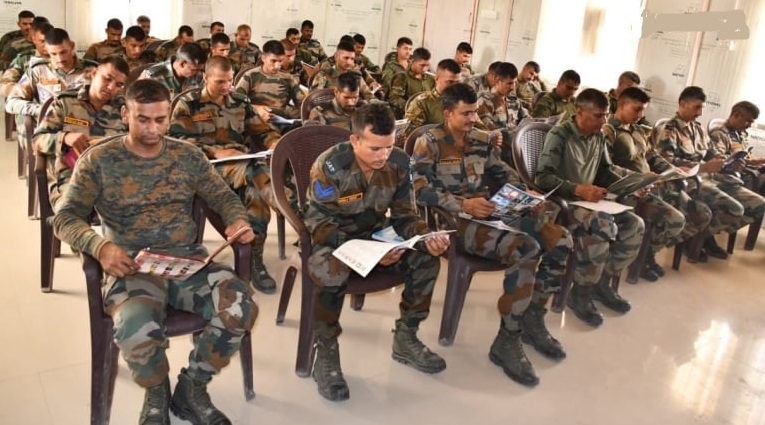 Agneepath Scheme replaced with Sainik Samman Scheme 2024, Defence Minister Rajnath Singh Relaunched Agniveer Scheme
Agneepath Scheme replaced with Sainik Samman Scheme 2024, Defence Minister Rajnath Singh Relaunched Agniveer Scheme
-
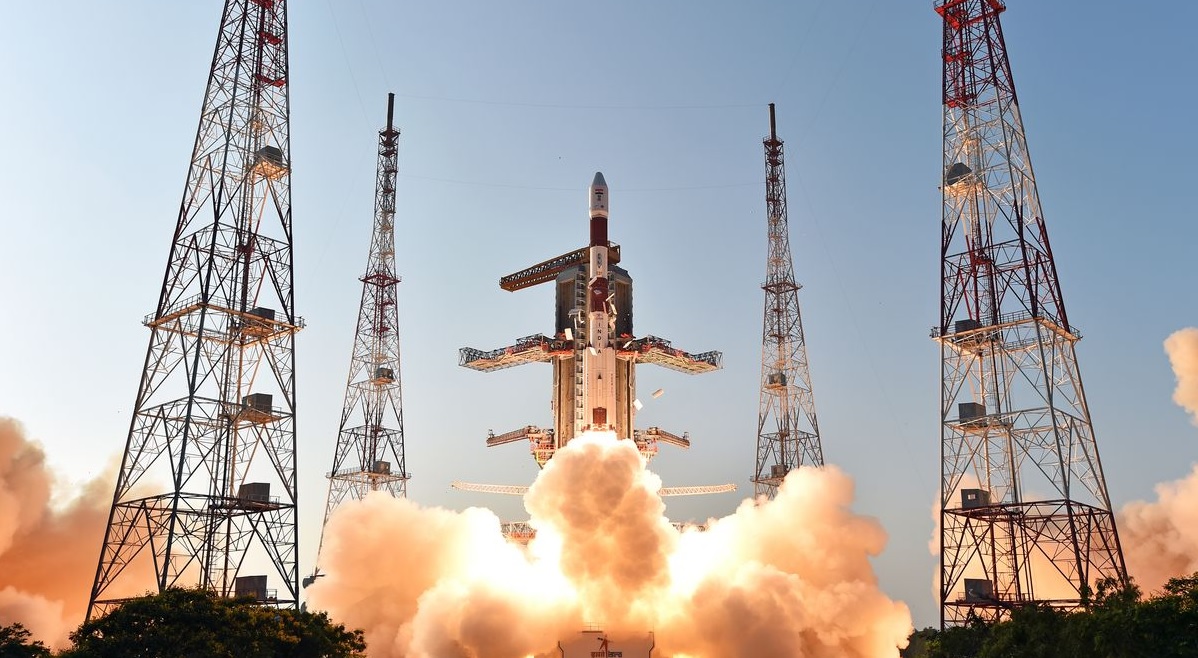 Isro Draws up Ambitious Plan for 2024, says will Launch at Least 12 Missions
Isro Draws up Ambitious Plan for 2024, says will Launch at Least 12 Missions
-
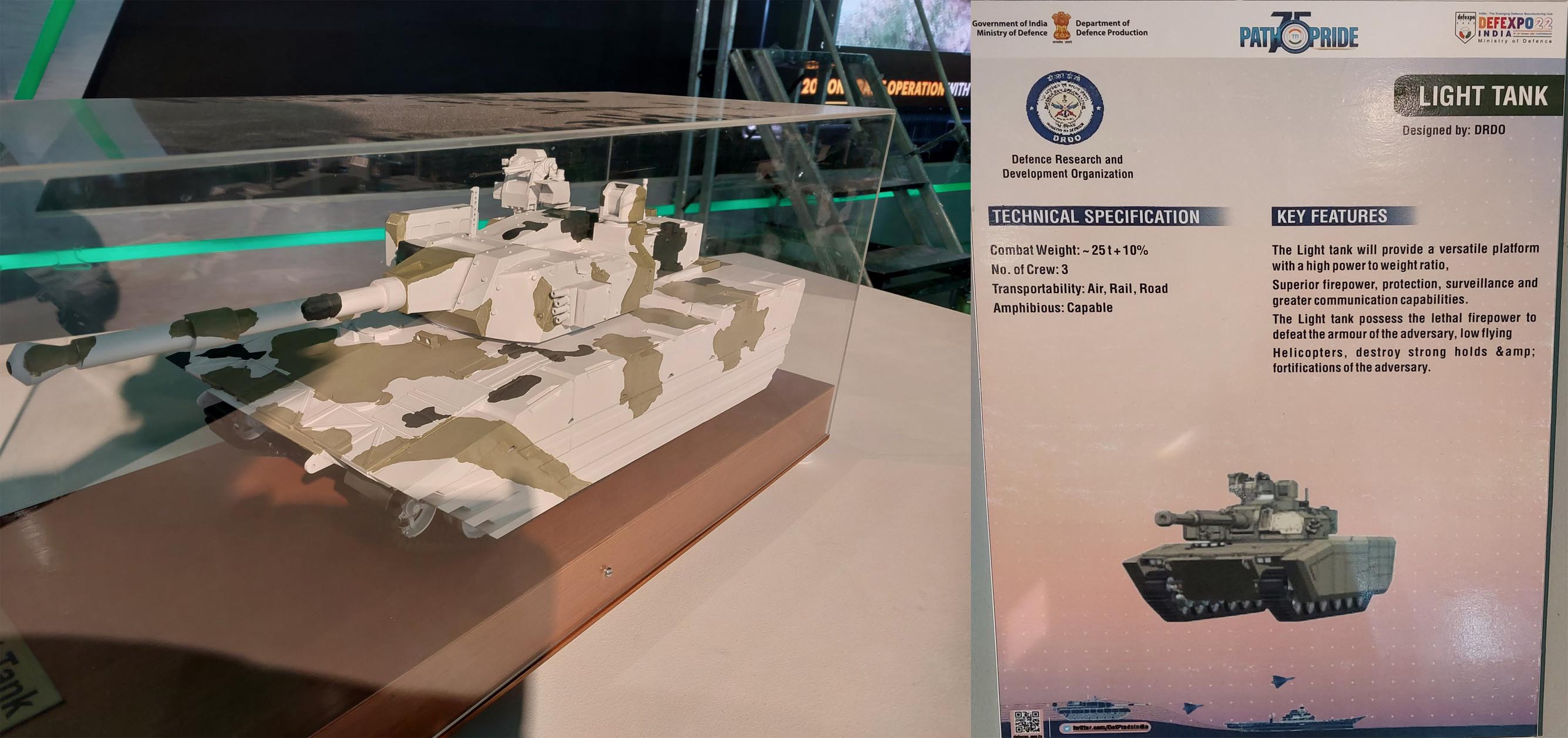 German Engines Available Now But India Chooses American Power Plants for Entire Zorawar Light Tank Project
German Engines Available Now But India Chooses American Power Plants for Entire Zorawar Light Tank Project
-
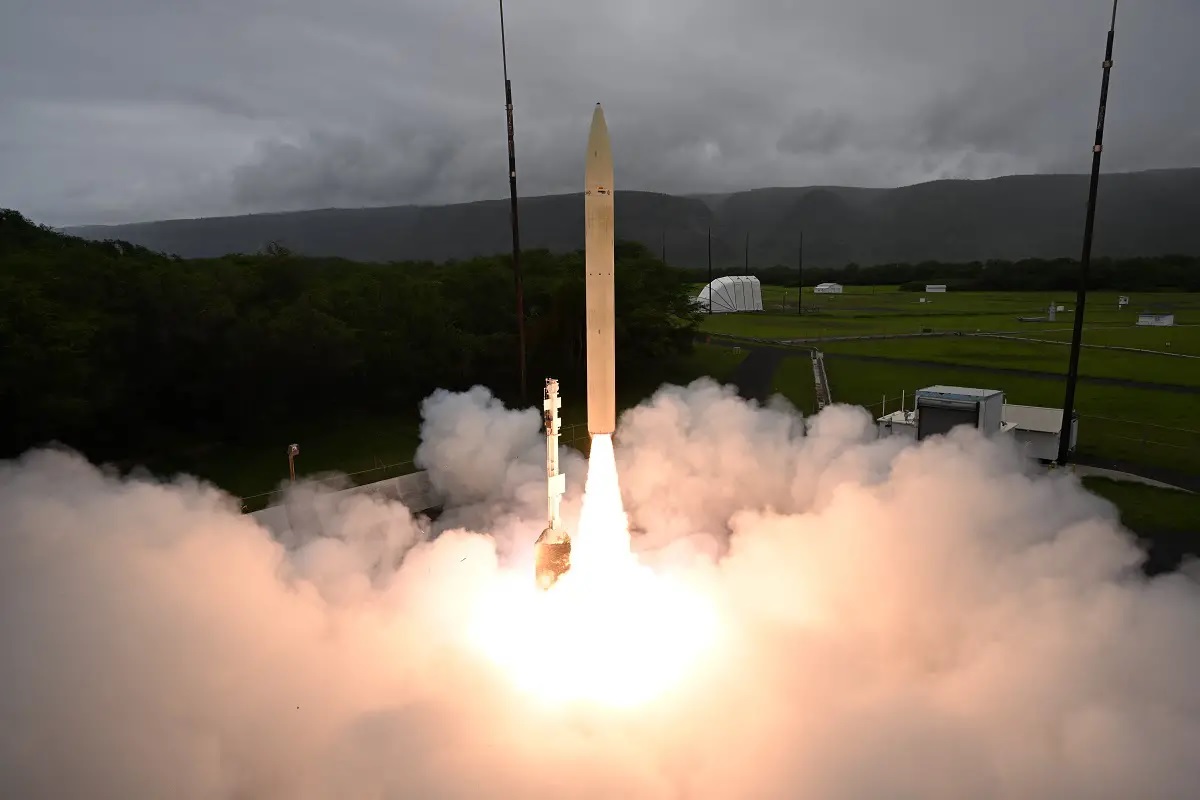 Successful Hypersonic Missile Test by U.S. Department of Defense
Successful Hypersonic Missile Test by U.S. Department of Defense
-
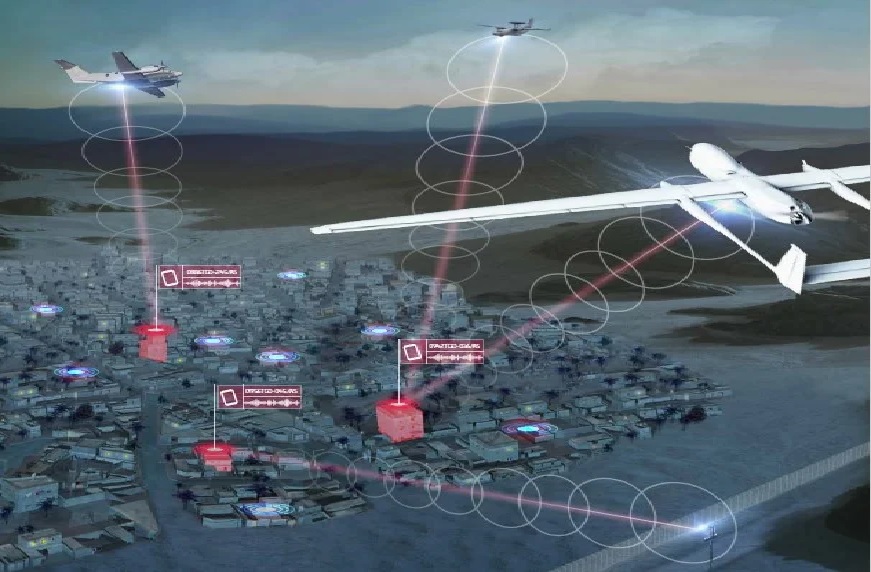 IAI's CellDart System Secures Contract for Airborne Cellular Intelligence Solution
IAI's CellDart System Secures Contract for Airborne Cellular Intelligence Solution
-
 India's Indigenous Kaveri Engine Program with New Focus on Thrust and Performance
India's Indigenous Kaveri Engine Program with New Focus on Thrust and Performance
-
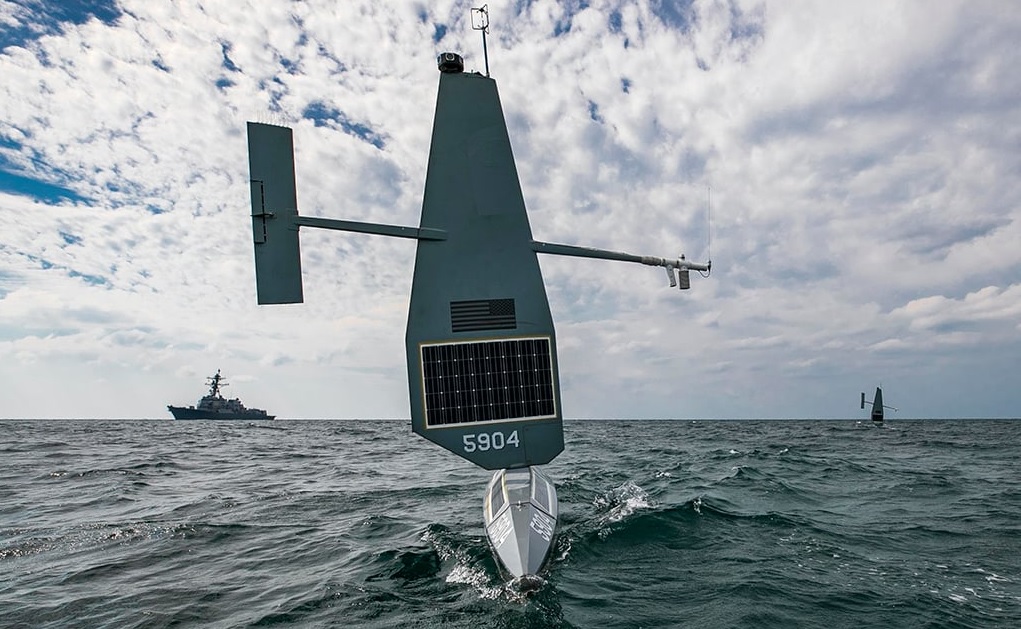 Unveiling the U.S. Navy's 'Hellscape': A Future Battlefield of Unmanned Systems
Unveiling the U.S. Navy's 'Hellscape': A Future Battlefield of Unmanned Systems
-
 Rolls-Royce Unveils a concept Nuclear Reactor that could one day Power a Colony on the Moon
Rolls-Royce Unveils a concept Nuclear Reactor that could one day Power a Colony on the Moon
Top Trending in 4 Days
-
 Indian Navy Tests 2 kW Directed Energy Weapon
Indian Navy Tests 2 kW Directed Energy Weapon
-
 India's Top Military Leadership Focuses on Creation of Joint Command and Control Centers to Strengthen National Security
India's Top Military Leadership Focuses on Creation of Joint Command and Control Centers to Strengthen National Security
-
 GE Prepares to Deliver Two F-404 Engines this Month For India's Tejas Production
GE Prepares to Deliver Two F-404 Engines this Month For India's Tejas Production
-
 Germany Expands Military Aid to Ukraine with Order of 17 More IRIS-T Air Defense Systems
Germany Expands Military Aid to Ukraine with Order of 17 More IRIS-T Air Defense Systems
-
 Putin says Russia ready for talks with Ukraine, but there's a condition
Putin says Russia ready for talks with Ukraine, but there's a condition
-
 Ukraine Unveils Varta 2 Armored Vehicle with Advanced 30mm Turret
Ukraine Unveils Varta 2 Armored Vehicle with Advanced 30mm Turret
-
 India and Brunei Strengthen Space Cooperation, Explore Long-Term LNG Supplies Amid Growing Ties
India and Brunei Strengthen Space Cooperation, Explore Long-Term LNG Supplies Amid Growing Ties
-
 China Targets Middle Eastern Defense Markets with Advanced OW5-A50 Laser Weapon System
China Targets Middle Eastern Defense Markets with Advanced OW5-A50 Laser Weapon System

